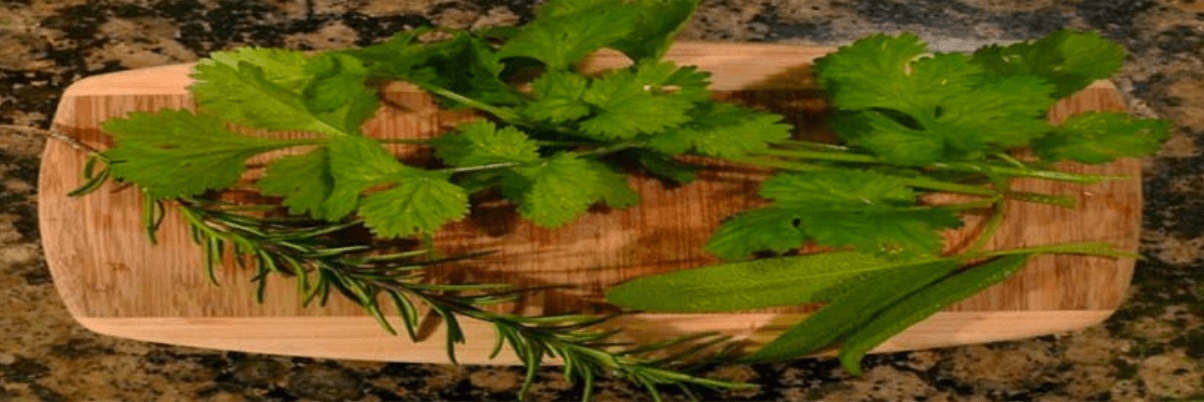Herbs In Hadith: Kitchen Herbs
Ginger
Allah has provided us with not only many helpful exotic herbs, but also with a number of common cures that we can find in our kitchen cupboards. Ginger, a popular flavoring for most eastern dishes; thyme, a popular ingredient in pizza and spaghetti sauces; as well as basil, the main ingredient in the popular pesto of Italy, have all been used for centuries for a great number of illnesses.
The Qur’an (76:17) mentions ginger as one of the drinks of Jennah: “And in it, their drink is mixed with ginger.” In fact, the modern name, “ginger,” comes from the Arabic root, “zindshebil,” and its wide range of properties certainly qualifies it for the rank of “heavenly herbs.”
A study in the medical journal, The Lancet, showed that two gelatin capsules of ginger are more effective than 100mg of Dramamine, an over-the-counter motion sickness remedy. This is probably because the volatile oils in ginger, oleoresins and proteolytic enzymes, are stimulants that trigger the production of digestive fluids and ease stomach problems such as queasiness and improper digestion. In fact, since ginger was first recorded in history books in 400 B.C., it has been employed against all kinds of nausea experienced while traveling and while pregnant, as well as a digestive aid after dining.
Modern science has also discovered that ginger has hypo-cholesterolemic properties useful for reducing both serum cholesterol and cholesterol stored in the liver. This explains another folk usage of ginger as a blood purifier and a detoxification herb. Its volatile oils have highly stimulating properties and thus aid in circulation, delayed menses, circulation problems and even rheumatism. The phenolic oleoresins in ginger bark are highly anti-micorbial, making them a popular folk remedy for colds, flu and coughs.
Over the centuries, people have found they can benefit from ginger’s warming properties by taking a bath with a cup or two of the tea added to it. This is a popular remedy for soothing arthritis and fibromyalgia pain as well as pain related to bruised or pulled muscles. The fresh juice of ginger has been shown to reduce serum glucose levels in test animals; therefore, it may have use as a hypoglycemic agent for humans some day.
For now, the most popular way to take ginger is as a decoction. A decoction is made by simmering eight ounces of water per one ounce of an herb for twenty minutes. Then, the tea is strained and drank. Another popular way to use ginger is to make ginger syrup, which can then be used to make tea or “ginger ale,” by simmering two cups of fresh sliced and unpeeled ginger root in water for half an hour. The ginger is then strained out, an equal amount of honey is added, and the syrup can be stored in the refrigerator for up to six months.
Thyme
Thyme also has a long history of healing. Ibn al-Juzi transmitted the following Hadith: “They fumigated their houses with thyme and frankincense.” Although this refers to an external use for thyme, it adequately sums its antiseptic, anti-bacterial and anti-viral abilities.
Thyme is used in commercial preparations of many feminine hygiene douches, Vicks Vapo-rub, Listerine mouthwash, eardrops and anti-fungal creams. The antiseptic abilities found in the volatile phenolic compounds, thymol and carvacrol, in thyme make it ideal in combating bad breath, gum disease, gastric problems caused by viruses or bacteria, eczema, burns, ringworm, psoriasis, parasitic infections, fever, sore throats, and body odor. It can even be used as an insect repellent by putting a tea infusion in a bottle and spraying it on the skin or by hanging the dried leaves in an area.
However, although thyme is a strong soldier in the battle against viruses and bacteria, it can also act as a gentle nurse in relieving pain and relaxing an ill person. Its thymol, in this capacity, is effective against headaches, menstrual pain, abdominal cramps and stomachaches. However, thyme should not be used by pregnant women or by children as it can act as a uterine stimulant and is toxic in high doses.
Basil
Sweet Basil, also known as myrtle, holds a special place in the Hadith of the Prophet (SAW) too, and has a long healing tradition. Ibn Abbas narrates that, “When the Prophet Nuh (AS) disembarked from the ark, the first plant that he planted was myrtle.” He also narrated that, according to a Hadith related by Abu Nu’aim, “Adam departed from the garden with three things: myrtle, which is the queen of all sweet smelling shrubs in the world; compressed dates, which are queen of all the dates in the world; and stalk of corn, which is queen of all the food in the world.”
Most likely, basil is referred to as a queen because it combats many of man’s ailments. It is a warming herb, thus working on all problems related to circulation. It also contains estragol, lineol and camphor, which act as lung and stomach tonics. Camphor is a powerful pain reliever so basil is often used for headaches, insect bites and other painful ailments. Since it can stimulate the adrenal cortex, it is often used in anti-depressant formulas.
Basil also contains antibacterial compounds, which make it useful for a variety of ailments such as colds, flu and stomach problems. When combined with cloves, it has been found to leech the body of heavy metal pollutants
– probably one reason it is considered among the superior detoxifying and tonic herbs.
According to Sahih Bukhari, Allah has certainly sent us a “cure for every disease except death” and, as a bonus, we do not have to go any further than our kitchens to find many of these “cures.”
By Karima Burns, MH, ND

